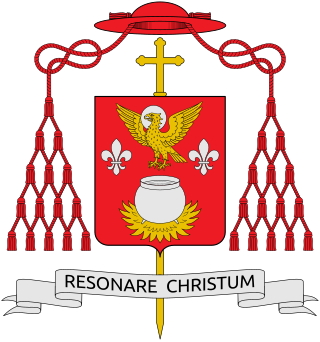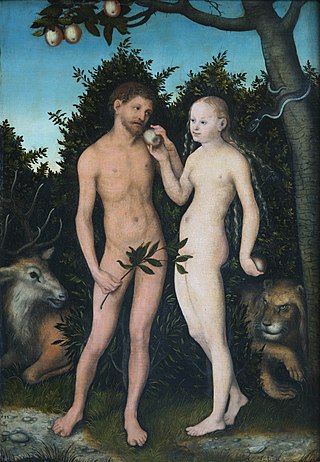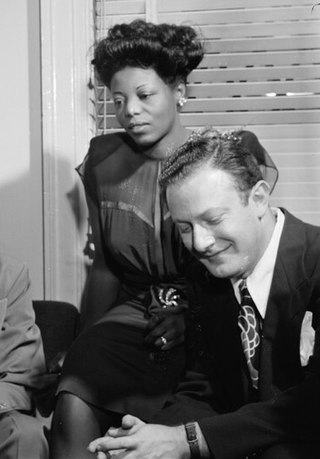Lumen gentium, the Dogmatic Constitution on the Church, is one of the principal documents of the Second Vatican Council. This dogmatic constitution was promulgated by Pope Paul VI on 21 November 1964, following approval by the assembled bishops by a vote of 2,151 to 5. As is customary with significant Roman Catholic Church documents, it is known by its incipit, "Lumen gentium", Latin for "Light of the Nations".

Mary Lou Williams was an American jazz pianist, arranger, and composer. She wrote hundreds of compositions and arrangements and recorded more than one hundred records. Williams wrote and arranged for Duke Ellington and Benny Goodman, and she was friend, mentor, and teacher to Thelonious Monk, Charlie Parker, Miles Davis, Tadd Dameron, Bud Powell, and Dizzy Gillespie.

Martín de Porres Velázquez was a Peruvian lay brother of the Dominican Order who was beatified in 1837 by Pope Gregory XVI and canonized in 1962 by Pope John XXIII. He is the patron saint of mixed-race people, barbers, innkeepers, public health workers, and all those seeking racial harmony, and animals.

Catholic Mariology is Mariology in Catholic theology. According to the Immaculate Conception taught by the Catholic Church, she was conceived and born without sin, hence Mary is seen as having a singular dignity above the saints, receiving a higher level of veneration than all angelic spirits and blessed souls in heaven. Catholic Mariology thus studies not only her life but also the veneration of her in daily life, prayer, hymns, art, music, and architecture in modern and ancient Christianity throughout the ages.

John Joseph Wright was an American cardinal of the Roman Catholic Church. He served as Prefect of the Congregation for the Clergy from 1969 until his death, and was elevated to the cardinalate in 1969.

Marian devotions are external pious practices directed to the person of Mary, mother of God, by members of certain Christian traditions. They are performed in Catholicism, High Church Lutheranism, Anglo-Catholicism, Eastern Orthodoxy and Oriental Orthodoxy, but generally rejected in other Christian denominations.
Catholic spirituality includes the various ways in which Catholics live out their Baptismal promise through prayer and action. The primary prayer of all Catholics is the Eucharistic liturgy in which they celebrate and share their faith together, in accord with Jesus' instruction: "Do this in memory of me." The Catholic bishops at the Second Vatican Council decreed that "devotions should be so drawn up that they harmonize with the liturgical seasons, accord with the sacred liturgy, are in some fashion derived from it, and lead the people to it, since, in fact, the liturgy by its very nature far surpasses any of them." In accord with this, many additional forms of prayer have developed over the centuries as means of animating one's personal Christian life, at times in gatherings with others. Each of the religious orders and congregations of the Catholic church, as well as lay groupings, has specifics to its own spirituality – its way of approaching God in prayer to foster its way of living out the Gospel.
Contemporary Catholic liturgical music encompasses a comprehensive variety of styles of music for Catholic liturgy that grew both before and after the reforms of the Second Vatican Council. The dominant style in English-speaking Canada and the United States began as Gregorian chant and folk hymns, superseded after the 1970s by a folk-based musical genre, generally acoustic and often slow in tempo, but that has evolved into a broad contemporary range of styles reflective of certain aspects of age, culture, and language. There is a marked difference between this style and those that were both common and valued in Catholic churches before Vatican II.

The veneration of Mary in the Catholic Church encompasses various devotions which include prayer, pious acts, visual arts, poetry, and music devoted to her. Popes have encouraged it, while also taking steps to reform some manifestations of it. The Holy See has insisted on the importance of distinguishing "true from false devotion, and authentic doctrine from its deformations by excess or defect". There are significantly more titles, feasts, and venerative Marian practices among Roman Catholics than in other Western Christian traditions. The term hyperdulia indicates the special veneration due to Mary, greater than the ordinary dulia for other saints, but utterly unlike the latria due only to God.

Women play significant roles in the life of the Catholic Church, although excluded from the Catholic hierarchy of bishops, priests, and deacons. In the history of the Catholic Church, the church often influenced social attitudes toward women. Influential Catholic women have included theologians, abbesses, monarchs, missionaries, mystics, martyrs, scientists, nurses, hospital administrators, educationalists, religious sisters, Doctors of the Church, and canonised saints. Women constitute the majority of members of consecrated life in the Catholic Church: in 2010, there were around 721,935 professed women religious. Motherhood and family are given an exalted status in Catholicism, with The Blessed Virgin Mary holding a special place of veneration.
The Church of St. Martin de Porres is a Roman Catholic parish church under the authority of the Roman Catholic Archdiocese of New York, located in Poughkeepsie, Dutchess County, New York.
Saint Martin de Porres is a sculpture of St Martin de Porres by American artist and Catholic priest Fr Thomas McGlynn, OP. It is one of McGlynn's most well known works and is said to have contributed to the canonization of the saint in 1962.
St. Dominic Catholic Church is a Catholic Church in Miami, Florida, US. It is part of the Roman Catholic Archdiocese of Miami and consists of 118 parishes, spanning Coral Springs in the north and Key West, Florida in the south.
Honi Gordon was a jazz vocalist.
Sacred jazz is jazz composed and performed with religious intent.

Black Catholicism or African-American Catholicism comprises the African American people, beliefs, and practices in the Catholic Church.

The Black Catholic Movement was a movement of African-American Catholics in the United States that developed and shaped modern Black Catholicism.
Edward Valentine Bonnemère, known professionally as Eddie Bonnemère, was an African-American jazz pianist as well as a Catholic church musician and composer. His "Missa Hodierna" became in 1965 the first Jazz Mass ever used in a Catholic church in the United States.

Zodiac Suite is a series of 12 pieces of jazz music written by the American jazz pianist and composer Mary Lou Williams and first performed in 1945. The suite makes use of elements of classical music alongside jazz, and Williams was influenced by modernism when writing and arranging it. Each song in the suite is inspired by an astrological sign and musicians or performers who were born under it. Williams began writing music for Zodiac Suite in 1942 and finished the composition in 1945.










